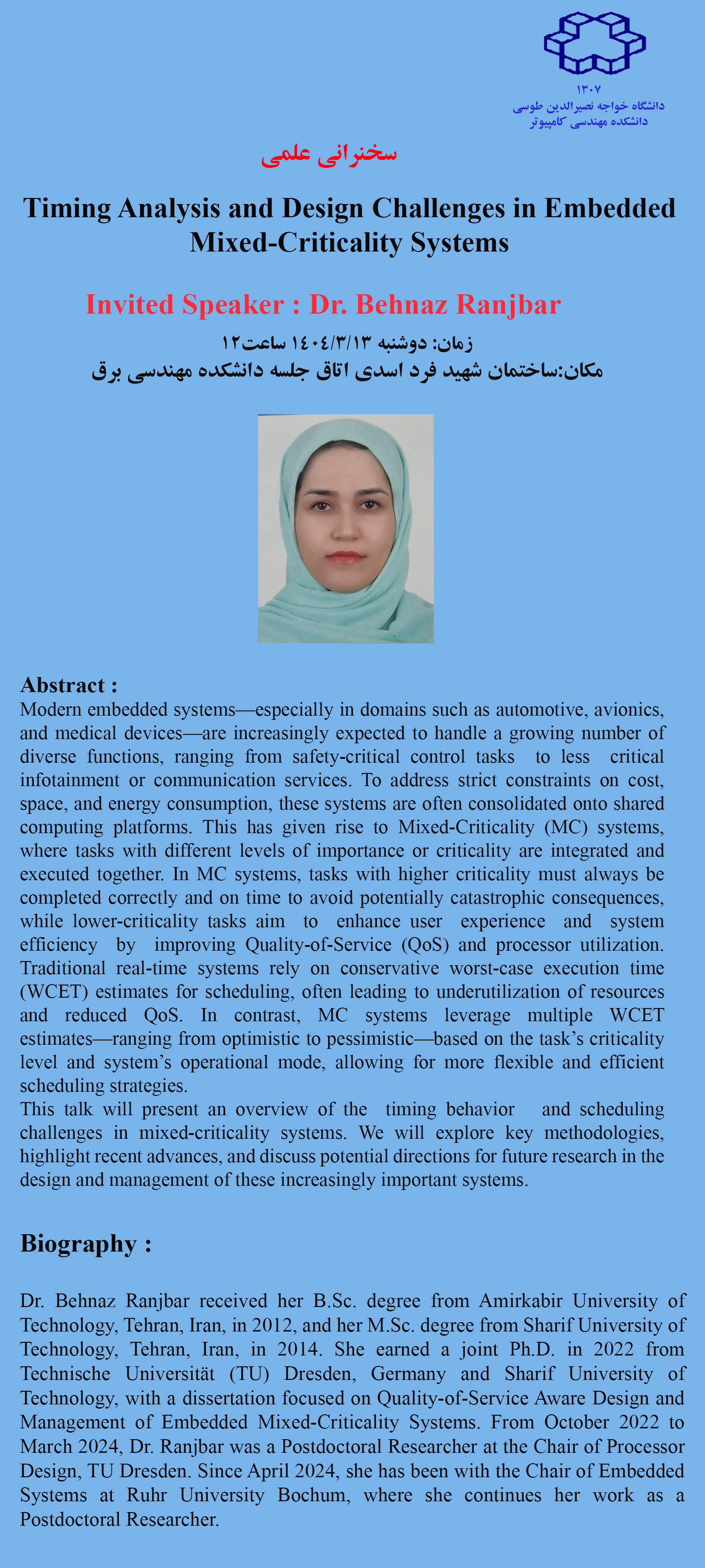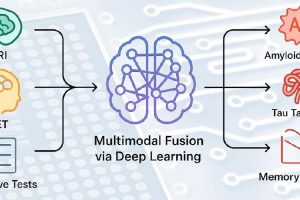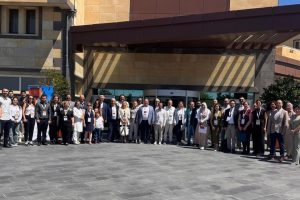“Timing Analysis and Design Challenges in Embedded Mixed-Criticality System” Webinar
Faculty of Computer Engineering of K.N.Toosi University of Technology holds the ” Timing Analysis and Design Challenges in Embedded Mixed-Criticality System” lecture on Monday, June 3rd, at 12:00 PM by Behnaz Ranjbar, Postdoctoral Researcher of Technical University of Dresden from Germany and chair of Embedded system at Ruhr University Bochum.
Modern embedded systems—especially in domains such as automotive, avionics, and medical devices—are increasingly expected to handle a growing number of diverse functions, ranging from safety-critical control tasks to less critical infotainment or communication services. To address strict constraints on cost, space, and energy consumption, these systems are often consolidated onto shared computing platforms. This has given rise to Mixed-Criticality (MC) systems, where tasks with different levels of importance or criticality are integrated and executed together. In MC systems, tasks with higher criticality must always be completed correctly and on time to avoid potentially catastrophic consequences, while lower-criticality tasks aim to enhance user experience and system efficiency by improving Quality-of-Service (QoS) and processor utilization. Traditional real-time systems rely on conservative worst-case execution time (WCET) estimates for scheduling, often leading to underutilization of resources and reduced QoS. In contrast, MC systems leverage multiple WCET estimates—ranging from optimistic to pessimistic—based on the task’s criticality level and system’s operational mode, allowing for more flexible and efficient scheduling strategies.
This talk will present an overview of the timing behavior and scheduling challenges in mixed-criticality systems. We will explore key methodologies, highlight recent advances, and discuss potential directions for future research in the design and management of these increasingly important systems.
This lecture will be conducted in person; however, interested participants may also join virtually via the link provided below:





